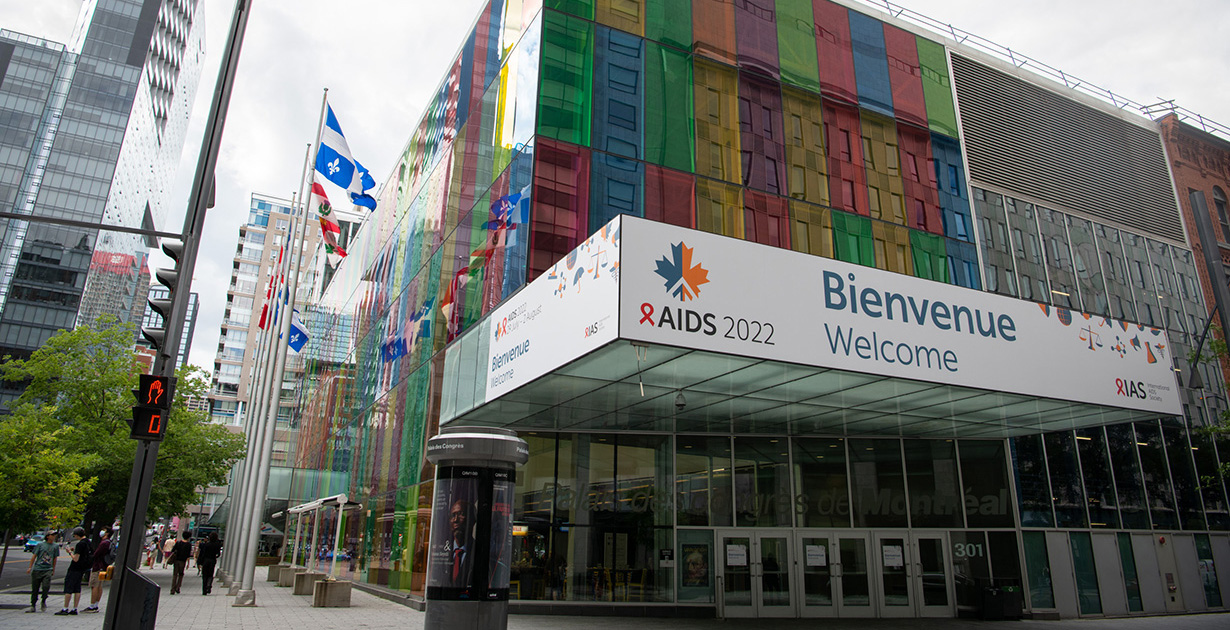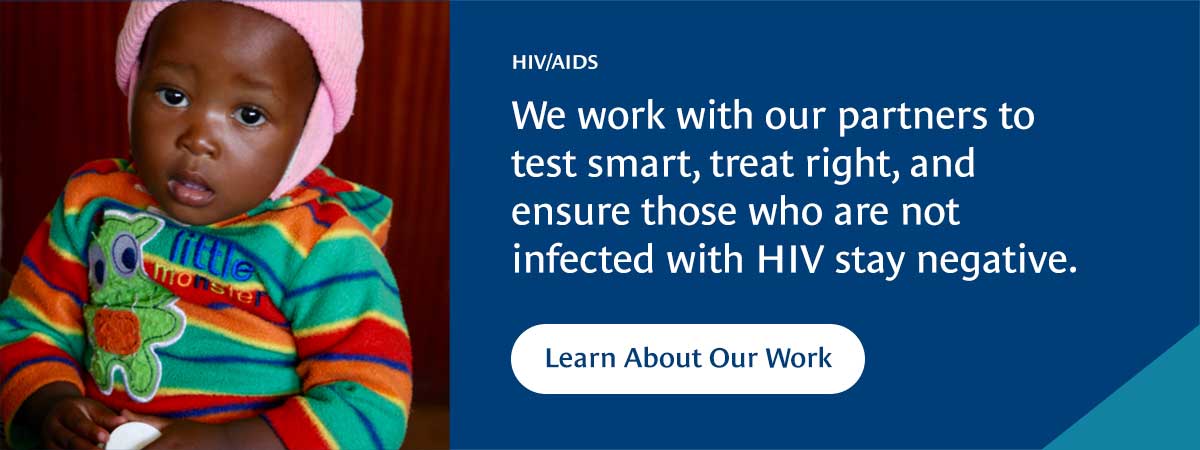Global AIDS fight ‘in danger’ but there is still time to get back on track, participants hear at AIDS 2022 conference.

Photo credit: IAS – the International AIDS Society
A few short weeks ago, CHAI marked the start of our 20th anniversary. We remembered the 2002 AIDS conference in Barcelona, which helped launch our organization, and the barriers to treatment people living with HIV faced at the time.
At the beginning of the 2000s, treating HIV cost over US$10,000 per person per year. CHAI’s pioneering work in negotiating price reductions and generic licenses, together with critical efforts from partners like PEPFAR and the Global Fund, has dramatically reduced that to under US$50 per person per year in 2022.
However, the enormous gains made in the fight against HIV are in jeopardy, as we learned at this week’s AIDS 2022 conference in Montreal.
“Last year we lost one person every minute to an AIDS-related illness even though we have the medicines to save those lives,” said Winnie Byanyima, UNAIDS executive director, while launching the organization’s ‘In Danger’ report on the first day of the conference. “We need to sound the alarm.”
The report indicates that there were 1.5 million new infections last year. At the same time, far too many people cannot access lifesaving medicine, including about ten million adults and half of all children living with HIV.
Yet many suggested the global response can get back on track. Despite disruptions to HIV services during the pandemic, “this can’t be a time out,” as Dr. Anthony Fauci, director of National Institute of Allergy and Infectious Disease (NIAID), told the conference on Sunday.
Over five days, AIDS 2022 saw donors making new commitments; exciting developments in the testing, prevention and treatment space; and several scientific innovations. For a detailed breakdown of all the critical issues, important results, and key recommendations put forward, see the International AIDS Society’s daily summaries. To catch up on CHAI’s time at AIDS 2022, keep reading.
Self-tests are a gateway to HIV prevention and treatment.
Ahead of the conference, CHAI, MedAccess, and manufacturer Wondfo announced an agreement to make Wondfo’s HIV self-test available for US$1. The price is 50 percent lower than the most widely used test and over 30 percent below the lowest-priced World Health Organization (WHO) prequalified test.
As the gateway to treatment and prevention, HIV testing is critical and self-tests are an important addition to the HIV care toolbox.
“I believe that every test is an empowered person who now knows their status and is able to make a choice about their health,” Kenly Sikwese told CHAI in a recent interview. Sikwese is an HIV advocate and director of the African Community Advisory Board (AfroCAB) Treatment Access Partnership.
The news was also welcomed by Global Fund Executive Director Peter Sands: “The Global Fund will invest in supporting these and other innovations that can allow us to restart and accelerate progress toward ending the HIV epidemic by 2030.”
Refocusing attention on advanced HIV disease (AHD).
Despite progress toward reducing AIDS-related mortality, in 2020 there were 650,000 AIDS-related deaths—only a six percent decrease from the year before. Sub-Saharan Africa has the highest burden of AHD, or late-stage HIV, in the world. Yet, screening remains low in the region and people living with HIV continue to die from preventable and treatable opportunistic infections.
On the first day of the conference, CHAI released an impact report, which provides a detailed look at progress made under our partnership with Unitaid and nine government countries: Botswana, India, Lesotho, Malawi, Nigeria, South Africa, Tanzania, Zimbabwe, and Uganda.
Communities of people living with HIV continue to lead the way.
Over the past five years, there have been historic successes in reducing the cost of optimal HIV treatments and ensuring regimens are rolled out to those who need them. At the center of these successes have been the voices of communities of people living with HIV. The Optimal Community Advisory Board (CAB), established by AfroCAB, CHAI, and Unitaid in 2016, has elevated the community perspective in policy planning and fostering demand generation for optimal products.
“Today, community engagement is a guiding principle for CHAI,” said Carolyn Amole, senior director of CHAI’s HIV program, at a session on Sunday. It is a cornerstone of not only CHAI’s HIV treatment work, but AHD and pediatric programs, and increasingly, HIV testing and prevention.
Earlier in the day, Unitaid’s Programs Director Robert Matiru shared that his organization plans to start funding communities directly to implement objective three on community engagement of Unitaid’s new strategy.
Integrating HIV programs with other health services to fight co-morbidities.
While decades of investments have resulted in progress in HIV diagnosis and treatment, other diseases, such as syphilis, hepatitis, cryptococcal meningitis, tuberculosis (TB), and poor mental health – all of which pose serious risks to people living with HIV – have lagged behind.
Integrating services within HIV programs can help countries more quickly diagnose, treat, and even eliminate diseases. Arguments for integration were made at several sessions in which CHAI participated, including for mental health, syphilis, and viral hepatitis.
Just ahead of the conference, CHAI published the 2022 Hepatitis C Market Memo and called on stakeholders to invest in hepatitis services to procure diagnostics and drugs at more affordable prices. A similar investment in dual HIV/syphilis self-testing is having an impact in Nigeria, where the government is ramping up the test to interrupt mother-to-child transmission of “two of the most devastating diseases a child can be born with,” as the head of Nigeria’s national AIDS, viral hepatitis, and STIs control program, Dr. Akudo Ikpeazu, described the situation.
On Monday, CHAI and partners Unitaid, MedAccess, and the Aurum Institute announced two new agreements to cut the price for short-course treatments to prevent TB by up to 80 percent. These rifapentine-based regimens have a smaller pill burden and reduce treatment from six or more months to as little as one month. For people living with HIV, who are at high risk of developing TB and may already have a high pill burden, short-course treatments are particularly important.






